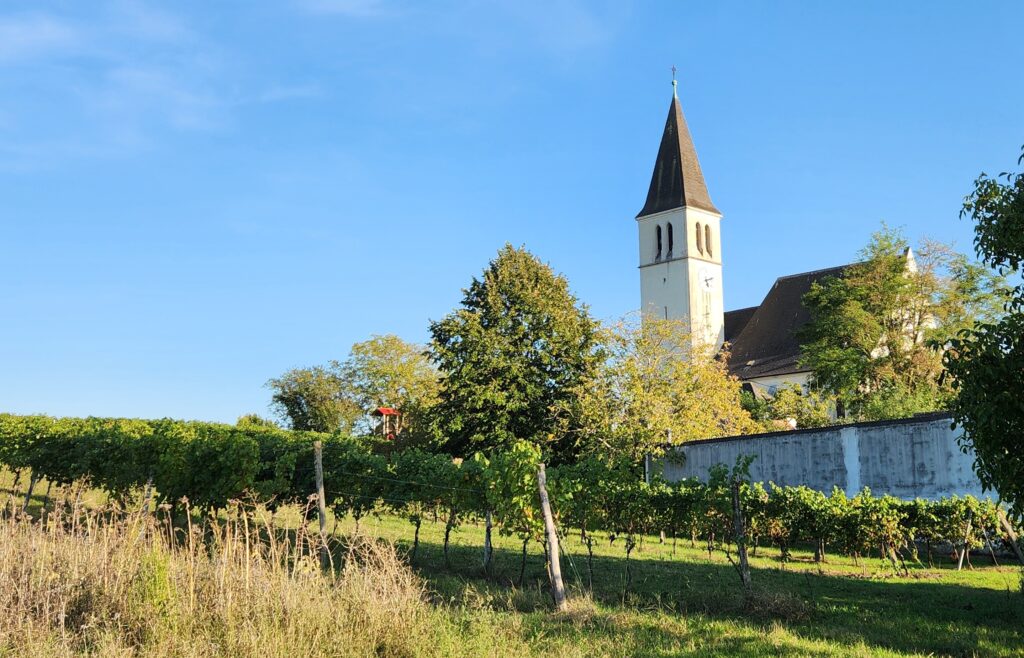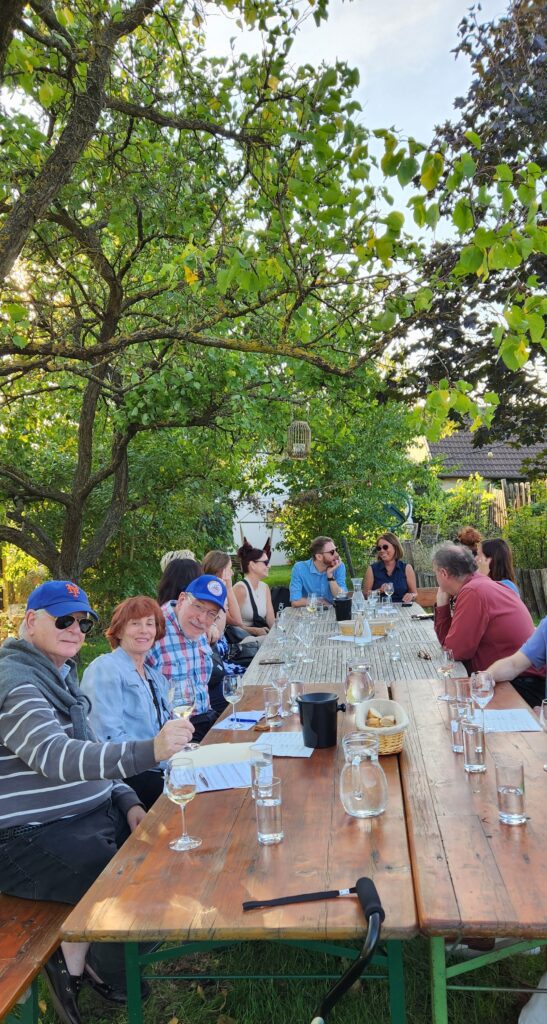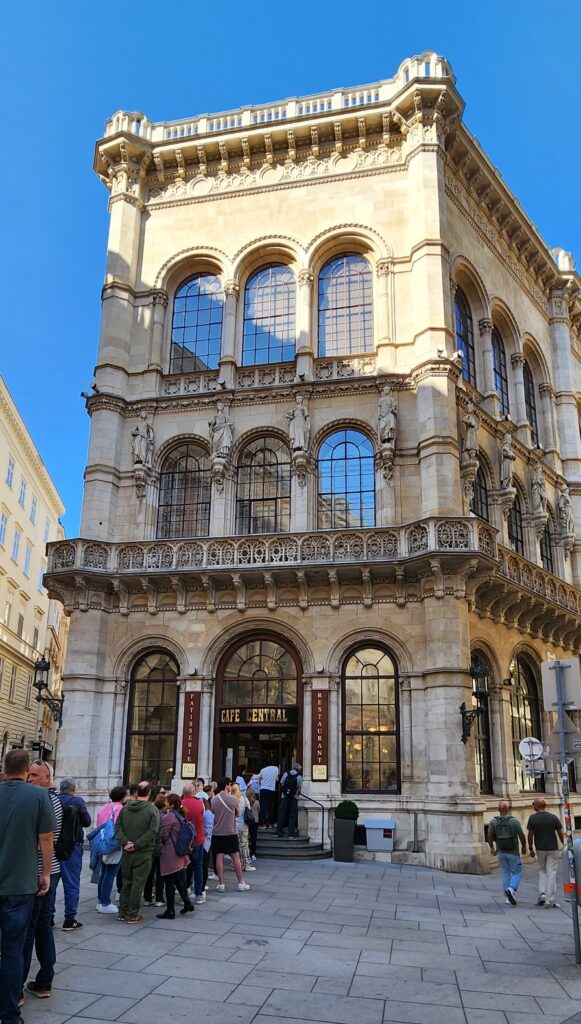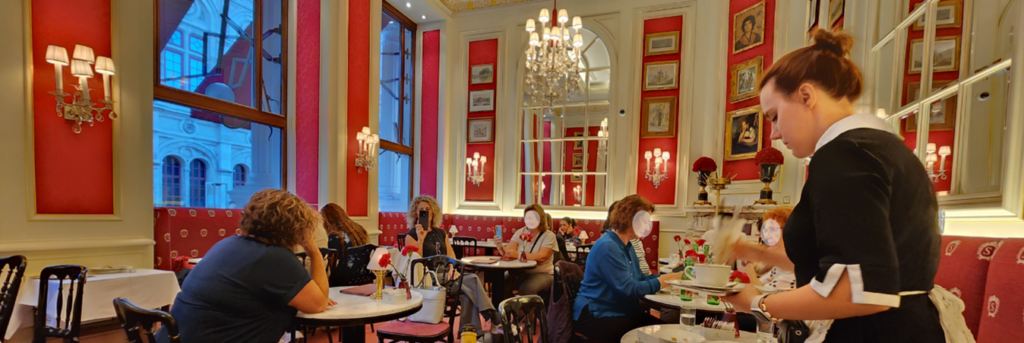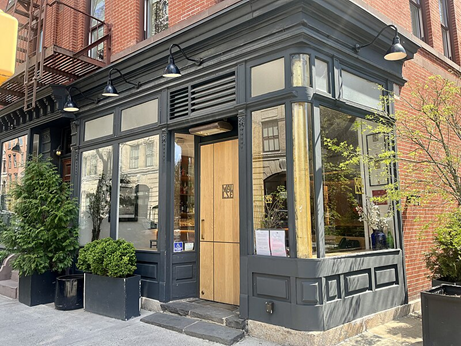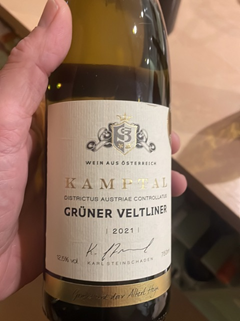Before we introduce you to this particular winery, we’d like to say a few words about how we got there. We visited Vienna for the first time and fell in love with the city. Our purpose was not wine tasting, but as long as there was an opportunity to see some vineyards, we couldn’t resist (of course). Quite frankly, we don’t usually like to take a tour for wine tasting purposes, but in this instance, we thought it was the best choice. Not every winery we visited was worth reporting, but Weinbau Prinz (www.weinbauprinz.at) was a very pleasant experience so we’re pleased to share it with our readers.
Weinbau is a German word for viticulture or wine growing, what we would call a winery. This particular one is owned by Roswitha and Martin Prinz, who are from winemaking families stretching back for centuries. Their small (3.1 hectares) vineyard is located in the village of Stetten in the winemaking district known as the Weinviertel, the largest in Austria. The Weinviertel (“wine quarter” in German) abuts Vienna and this winery is only a 45 minute drive from the city center.
The village church in Stetten, Austria rising over the vines of Weinbau Prinz.
The wine tasting experience at Weinbau Prinz is highlighted by the setting. Your party is seated at a long table right in the vineyard, with the steeple of the village church looming over you. If, like us, you have seen scenes like this in the movies and were ever-so-eager to do it yourself, you’re hooked before you even take the first sip.
Tasting in the Weinbau Prinz vineyards.
The wines are poured by Roswitha Prinz herself. (Martin is the cellar guy.) Besides owning the winery, she is a lecturer at BOKU, which we gather is the Viennese university for viticulture. She seems unfazed at answering questions from those who know little about Austrian wine or wine in general, as well as from wine snobs. You get all kinds in the wine business, we guess.
Weinbau Prinz is proud to proclaim that they have been fully organic (or bio as they say in Europe) since 2018. For a small vineyard, they make quite a wide variety of wines, ranging from the inevitable Grüner Veltliner, through a white blend they call, simply enough, Cuvee Weiss to some sparkling wines known in Austria as sekt. Weinbau Prinz has a number of wines made from unusual (to us) white grapes, including Blütenmuskateller, Donauriesling, Cabernet Blanc, and Sauvignac. Although the Weinviertel is primarily known for white wines, they also offer a few Zweigelts, a red grape more frequently found in Western Austria.
We’ll leave it to others to discuss the subtleties of aroma and taste of the wines at Weinbau Prinz. Power Tasting is all about the wine tasting experience, not wine reviewing. If your objective is an enjoyable hour well spent, in scenery that seems to come from the winemaking Tourism Bureau, we recommend Weinbau Prinz without reservation. Oh, maybe a reservation would be a good idea, since they welcome tours.
